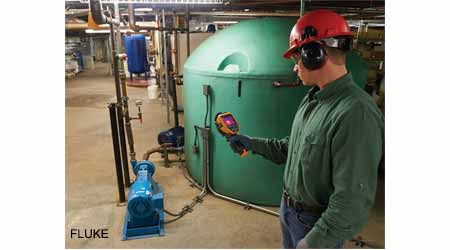Impact of Infrared-Imaging Continues to Increase
Part three of a 3-part article on the technology improvements in infrared imaging
Advances in infrared-imaging technology make it possible for the value of infrared thermography to penetrate much deeper into departments and their activities than ever before. The impact of infrared imaging is similar to that of computerized maintenance management systems (CMMS), which have made tracking asset data much easier in recent years. Instead of pulling a paper binder from a shelf, a manager can open a CMMS database and review inspections, verify that technicians have made the needed repairs, and even determine if technicians have conducted post-repair inspections.
Software for infrared-imaging systems also has evolved greatly. Analysis now consists of reviewing multiple temperature data points in one image, an overlay of isotherm palettes to highlight bands of temperature, and correction factors for surface emissivity and reflected background temperature.
These changes mean a report’s information gives managers more insight and value. Thermographers can generate reports and convert them into electronic formats for distribution to managers, facility executives, and consultants. In an era in which justifying equipment purchases is extremely difficult, the adage of a picture being worth a thousand words can pay dividends for managers trying to push for funds.
With camera prices at an all-time low, each facility now can have its own imagers for follow-up inspections after repairs. This advance makes it possible to conduct spot-checks of refrigerant and chilled-water flow, detect moisture in roofs and building envelopes, and a perform host of other tasks that were not possible a few years ago. With minimal coordination, follow-up inspection images taken by technicians can support vendor-supplied data to provide a deeper, more comprehensive view of a facility’s overall health.
This article was provided by The Snell Group — www.thesnellgroup.com — which offers training, certification, inspection, and consulting services on infrared thermography and motor circuit analysis.
Related Topics:












